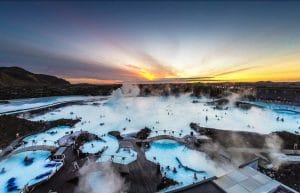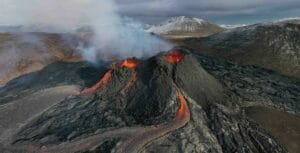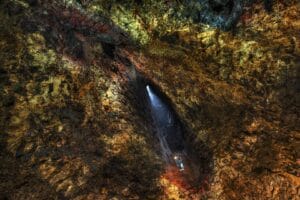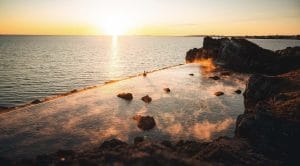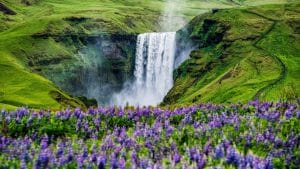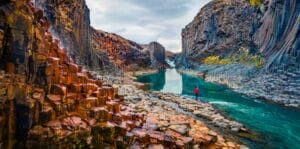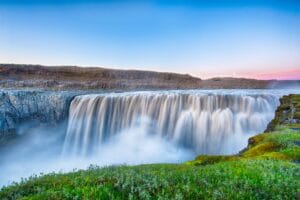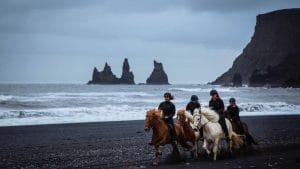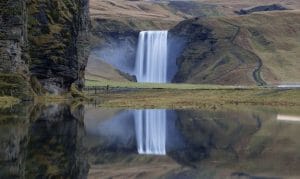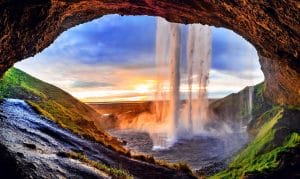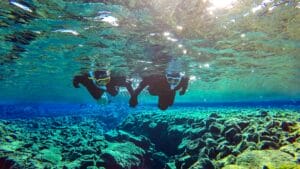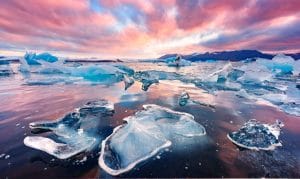The Reykjanes Peninsula eruption is the first of its kind happening in the region after 800 years. The outbreak is creating sweeping black planes, jagged peaks, moss-coated lava, and extensive lava.
Before the Reykjanes Peninsula eruption, tremendous earthquakes shook the region. Many of the earthquakes even happened last week. Moreover, the rising number of disruptive earthquakes made geologists realize that a volcanic eruption was on the way. Furthermore, the eruption caused the creation of explosive geysers and hot springs in its surface region. Additionally, the Reykjanes Peninsula eruption has defined the hexagonal basalt columns by creating winding lava cliffs and caves.
Moreover, Iceland is often flooded by visitors that want to witness marvels created by a volcanic eruption. Fortunately, the opportunity still exists for visitors since the volcano is still in an active eruption when this is written.
Impact of COVID-19 on Volcanic Visitations
Icelandic health authorities have assured COVID-19 restrictions of maintaining people’s safety in busses, gatherings, business operations, etc. As per the restrictions, local companies can offer walking and vehicle tours near the region.
Moreover, the group would consist of a small number of people that would also have to follow social distancing norms. The tour operators might also conduct a lower number of daily visitations as it takes almost 1.5-2 hours each way.
However, the restrictions benefit travelers massively. It allows relishing the wonders of the volcanic eruption without disruption from a crowd. Meanwhile, the tour operators spend less time managing and guiding people about the new changes around the volcano.
Besides guided tours, people can even opt for self-driving trips. By doing so, the visitors can enjoy the beauty of the volcanic eruption at a personal pace. Additionally, it also helps to carry a preferable itinerary and vehicle.
A known fact about Iceland is that seventy percent of the population resides in the capital, and there are nine volcanos in the country. Therefore, you can easily explore different regions without expecting other visitors.
Unfortunately, the same is not valid for Geldingadalur as it is receiving massive attention due to its recent eruption. Presently, Iceland has a population of 340,000 people of 254,000 who received vaccination by July 25th, 2021.
As mentioned, the recent eruption at Geldingadalur is making it a crowded destination. However, whether you choose a guided or self-driving tour, it is crucial to adhere to wearing masks and social distancing to avoid another pandemic wave.

Iceland's Geldingadalur Eruption
At this point, the Reykjanes Peninsula in Iceland is experiencing volcanic eruptions. It is the area that connects Keflavik International Airport and Reykjavik, which makes it the ideal stop for your trip to Iceland. As mentioned earlier, geologists discovered that the surrounding area experienced many earthquakes, making the volcano prone to eruption.
However, the story begins at 21:30 on March 19th, 2021, when the Geldingadalur area experienced a fissure. The site lies south of the Fagradalsfjall volcano, and the aperture measured almost a square kilometer (700 meters to be exact).
The nearby residents felt secure because the Geldingadalur is part of a sheltered valley situated infrastructure or settlements. Therefore, the eruptions were barely noticed by the residents. Besides this, volcanos often emerge in two ways, namely exploding and oozing.
Thankfully, this volcanic eruption was sputtering and oozing out of the earth. Even though eruptions are common in Iceland, locals and residents from abroad wanted to visit and view the spectacular emergence.
According to a source, the Geldingadalur volcano became more explosive with repeated intervals of magma jets. Moreover, the interval durations changed from ten to thirty minutes on May 5th, 2021. The source also reported up to 400 meters high eruptions through live reports from the site.
Last month, the volcano was only discharging fissures. Presently, it has five cracks with magma eruptions. In early May, visitors noticed giant lava fountains on their tour to Geldingadalur. The source reports a peak lava eruption of 450 meters on Sunday at 8:58
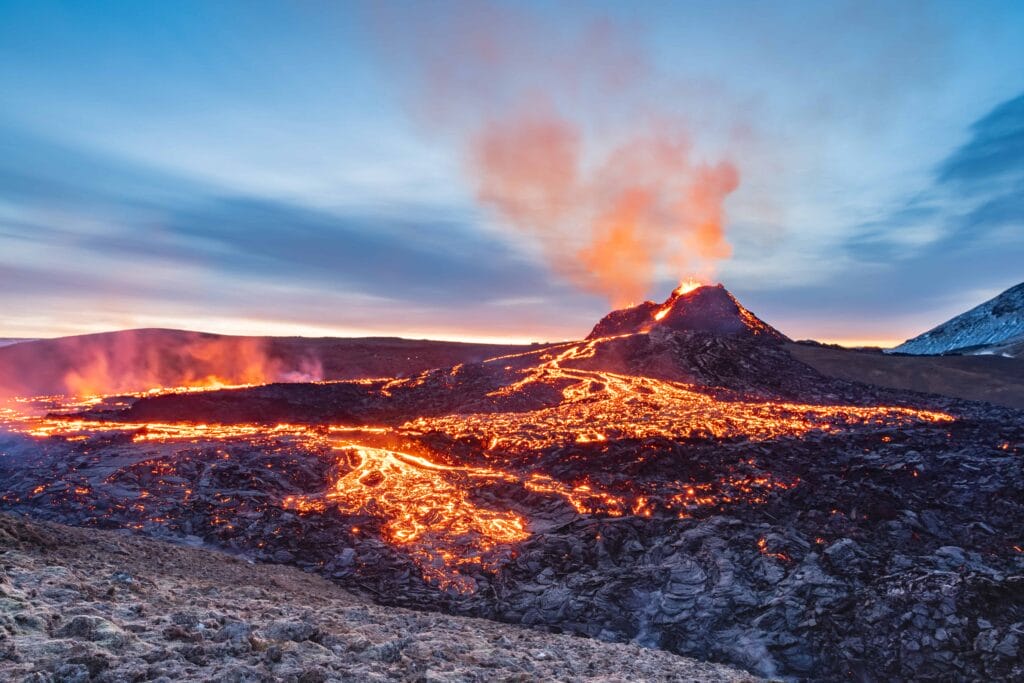
The Scientific Council for Civil Protection stated that Reykjanes peninsula is currently experiencing low seismic activity. The aftershocks are leading to detected earthquakes in the region.
Moreover, it is the same region wherein the Geldingadalur eruption created a corridor. A source revealed that GPS devices didn’t show any noticeable changes, and satellite observations noticed only a few changes.
The erupted magma can reach down to the crater in the form of convert to ash or rocks. Therefore, the danger zone around the Geldingadalur eruption has been expanded by the government authorities.
Operators offered local tour guides besides the molten rivers and fiery fountains and even started providing small plane or helicopter rides. The latter was undertaken at the Reykjavik Domestic Airport.
The photos and videos taken through flying rides were much magnificent compared to local rides. However, most visitors choose to take local hiking tours because it is cost-effective and provides a much more realistic experience.
Visitors are hiking through the Geldingadalur, a very dicey situation for solo travelers, remote and sheltered. Besides this, the nearest roads to reach Reykjanes Peninsula have been closed. The best way to visit Geldingadalur Volcanic Eruption is through the main road connecting the greater Reykjavík area and Keflavík International Airport. Unfortunately, mobile phone reception at the height diminishes significantly. But, travelers can ensure continuous reception on mobile phones by beginning their journey from the Blue Lagoon eastwards.
People that have recently recovered from COVID-19 should be careful when taking the trip. They might experience air pollution as they get near the volcano eruptions. The eruption from the volcanos also releases SO2 gas that may cause throat and eye irritation on a small scale. Therefore, there is no shame in turning back if you feel uneasy. You can enjoy the view through your drone, via live streams, or social media.
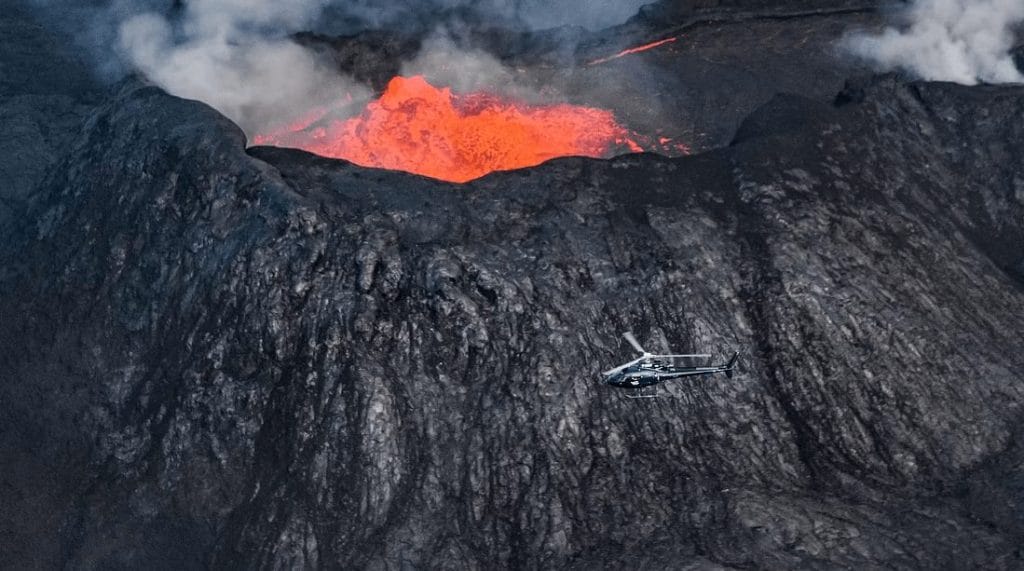
Hiking to the Active Volcano
It takes almost two hours of trekking to reach the Active Volcano. Moreover, the journey becomes tougher due to rough terrain and unpredictable seasonal weather. Therefore, wanderers in Iceland must wear waterproof clothes and sturdy hiking boots.
Another important fact to remember while going on a two-hour one-way trekking journey towards the volcano is to carry a water bottle. Additionally, don’t forget to incorporate energy bars or drinks. The en-route journey doesn’t provide options to take food from shops.
Make sure to keep the devices with the camera fully charged to capture the best moments. These should include your smartphone or iPhone, DSLR, drone camera, etc. Since this is happening after 800 years, capturing the moments is crucial, so don’t forget to carry a backup battery.
Solo travelers should switch to journeys with a local guide as it is safer, especially near an eruption. However, they can follow the path created by visitors or even ask for directions from local guides. Unfortunately, unfamiliarity with a new terrain makes it a much riskier affair.
On the other hand, local guides experience the changes and understand the land much better than inexperienced travelers. A precaution to remember is to avoid the Active Volcano tour if you have respiratory problems. The eruption fumes can prove dangerous for you.
It would help if you did not avoid the initial symptoms as they might worsen moving ahead with strong and direct winds. Tourists should remember that Geldingadalur has become a vast crater since the first fissure opening. Moreover, there are numerous new fissure openings in the surrounding areas.
According to a source, the rise in continuous magma eruptions in the Geldingadalur region proves a good indication for geologists and travel agencies. It means that the eruptions would continue for many upcoming weeks or months. Reportedly, the eruptions have just begun.
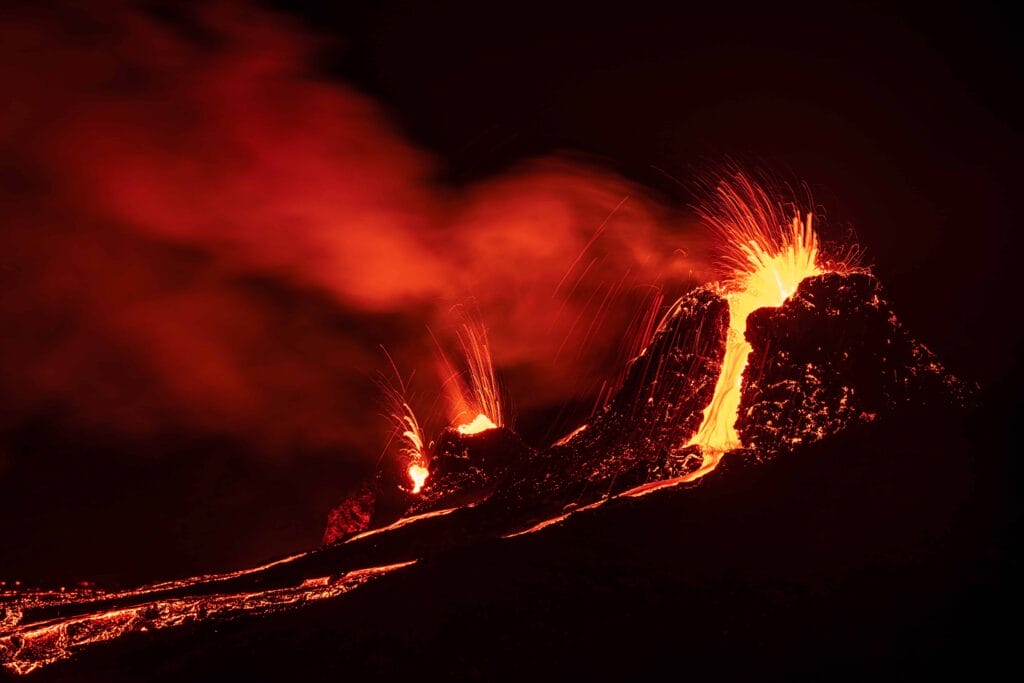
Changes in the Eruption
The Icelandic Icelandic Meteorological Office (IMO) published a report about the seismic activities at Fagradalsfjall. It states that the region experienced significant changes in the past week.
The more explosive eruptions occurred mostly in regular intervals. The lava rhythm showcased similar responses until May 5th, 2021. Lava fountains or ten-minute magma jets were frequented until the morning of the date. Post that, there were many powerful magma jets after almost thirty minutes. The changes in the interval durations are visible through IMO’s report. The report is based on the visuals captured by the government agency through multiple webcams at the site.
A reporter from a reputed website stated that there is strong fountain activity with a reach of 100 to 150 meters, most of the time. But, occasionally, it can erupt up to 300 to 400 meters high. Also, seismic tremors have become widely noticed around the surrounding regions.
Presently, the reason for the changes in volcanic activity and the magma or gas composition hasn’t been detected by scientists. The uppermost conduit has also changed in shape. The upwelling of gas bubbles is possibly affected due to a formed constriction.
Scientists have started comparing the activities of this pulsive volcano with Þrihnukagigur, a dormant volcano. The latter is world-renowned for a gigantic magma chamber with a 213-meter depth, i.e., 699 feet. Moreover, Þrihnukagigur is situated in the Brennisteinsfjöll volcanic system, close to Reykjavík, the capital of Iceland.
Presently, Iceland has 130 active and inactive volcanoes; thirty are available in almost all regions, except the Westfjords. The latter is an exclusion because it is distanced from Mid-Atlantic Range and was developed almost sixteen million years ago.
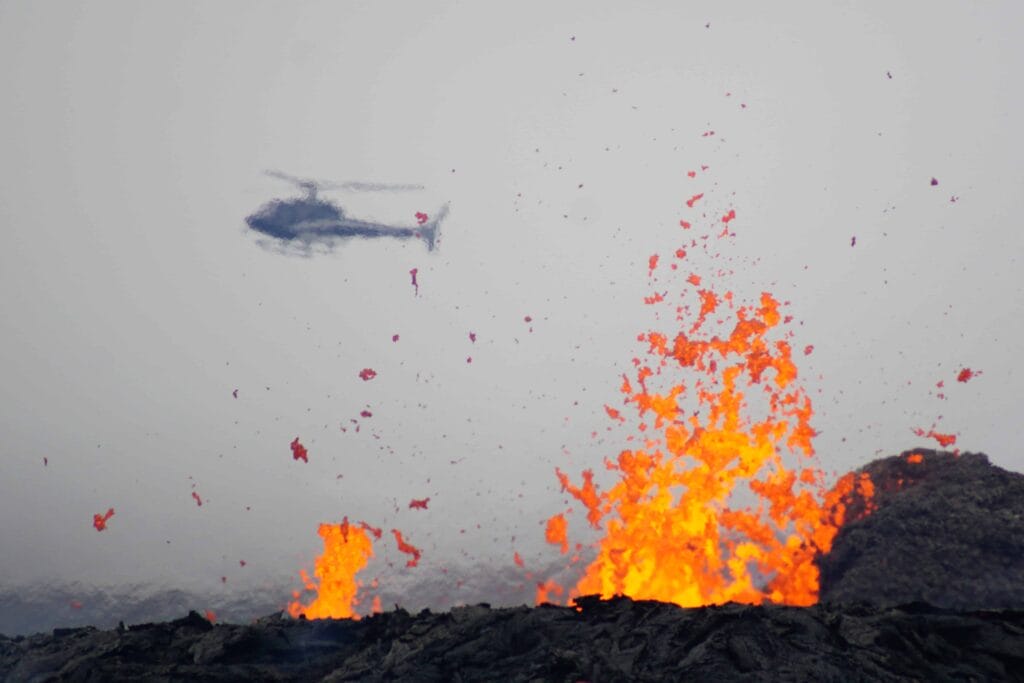
Facts to Know About Geldingadalur Volcano Eruption
Although hiking towards the Geldingadalur volcano is accessible and open to the public, it is still on private property. The week before the March 19th, 2021 eruption caused numerous earthquakes in the southern peninsula. Since 1991, these have become the highest digitally recorded number.
Geldingadalur is a shield volcano because it is rare and offers longevity for weeks, months, or even years. The reason is the steady lava stream beneath the earth’s crust. Such volcanos have a constant melting, glowing, and hot river almost 15-20 km below the surface.
Some of the most famous shield volcanos include Haleakalā in Maui, Mount Olympus on Mars, and Medicine Lake Volcano in California. According to a source, the last volcanic eruption of such magnitude happened before the ice age.
The Geldingadalur volcano is a part of the Krýsuvík volcanic system that stretches into the southern peninsula. According to historical perspective, fissure to fissure peninsula jumping culminates several decades of eruptions. The fact becomes verifiable with increased earthquake activities noticeable through ancient volcanic rocks.
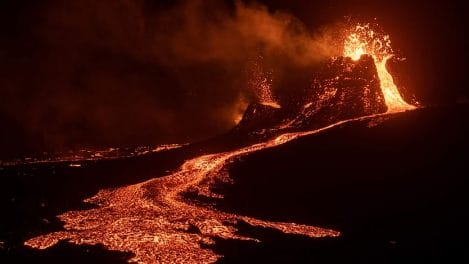
Things to Remember While Going on a Geldingadalur Volcanic Eruption Trip
The recent developments have shown us that the Geldingadalur volcano has become active with intense fountain activity. Therefore, it is crucial to stay close to your local guide and abide by guidelines.
The volcanic glow could be eventually visible from Reykjavík outskirts initially. However, visitors can view it closed due to recent strong fountain activity. Therefore, you should carry warm outdoor clothing, waterproof pants and jackets, headwear, gloves, waterproof hiking shoes, snacks, meals, headlamps, and face masks.
If you book a guided tour, you could avail of transport from Reykjavík. However, while climbing through steep slopes, there is a possibility of rockfall. In addition, new eruption sites can open; thus, there is the possibility of change on short notice.
Visitors might experience substantial gas pollution near the area. If eruptions increase on sudden notice, the gas pollution can drastically increase.

Volcano Tourism in Iceland
Exploring the volcanos of Iceland has become tremendously popular, especially after the footage of the Eyjafjallajökull eruption in 2010. The influence in exploring volcanic activities became existentially popular and grown with the recent Geldingadalur eruption.
The volcanic tours come in different forms, such as excursions, wherein the local guide would explain stories in the region in English. You can find family friendly tours as well as private tours to the volcano.
The family friendly tours have a minimum age of 6 years, but remember that your child needs to be able to walk on uneven surface for around 3-4 hours.
Another popular volcano excursion is through Lake Mývatn in north Iceland, wherein you can experience Highland hikes and the Krafla system. Besides this, you can even explore through the Snæfellsjökull volcano. Note that these volcanoes are not active.
Additionally, you would even find Magni, and Móði, two of the newest craters in the nation. Here you can experience the famous Fimmvorðuháls hiking trail.
Presently, there are nine most famous volcanos in Iceland. These include Eyjafjallajokull, Thrihnukagigur, Grimsvotn, Hekla Volcano, Katla, Snæfellsjökull, Askja, Krafla, and Hverfjall/Hverfell. The Geldingadalur might just become one of the newest members of the list if it continues its eruptions.


